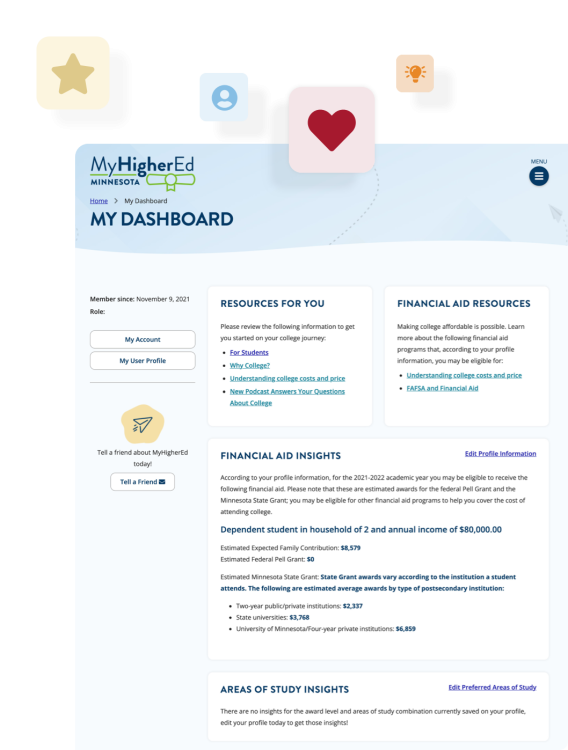There are two major types of transfer students: the ones who start off at a two-year college and then transfer to a four-year one, and students who transfer between four-year institutions. Let's take a look at the first approach.
There are many good reasons to start at a two-year college:
- Shorter time commitment: Maybe you feel you are not quite ready for a four-year commitment
- Affordability: Starting at a 2-year college may be more affordable to you
- Proximity: Maybe you need to stay close to home and that is the closest higher education institution
- Work opportunities: Maybe you would like to start working in your chosen career after earning your first two-year credential
These are all valid reasons to consider transferring as a pathway to your desired degree. However, if you know your goal is to get a four-year degree, there is some planning you should do prior to starting your education at a two-year institution.
College Search Tool
Browse and compare Minnesota institutions to complete your desired program.
Basic Planning
Step One
Check on the accreditation of the institutions. If you are considering transferring colleges as a pathway, you should make sure each of your prospective schools are accredited. Accredited institutions are more valued by potential employers; moreover, these institutions meet quality and educational guidelines that make it easier for transferring your earned credits to the second institution.
- Research for accreditation and articulation agreements among the institutions you are considering. Articulation agreements between colleges or universities make it possible for most or all of your academic credits be transferrable from one college to the other, which makes the process more simple for students and saves them time and money.
Step Two
Start planning your transfer as soon as you possibly can. Many students wait a couple of semesters -or a couple of years- before planning their transfer and then find that they maybe missed a step, or didn’t take the right classes, or should have transferred earlier.
- Before you start at your two-year institution, you should decide where you would like to transfer for earning your bachelor's degree.
- Research possible colleges, compare their programs, cost, financial aid available, and transfer requirements.
Step Three
Contact the institutions you are considering. By working with your desired four-year institution, as well as your two-year institution, many missteps can be prevented. Colleges have staff who are there to help you transfer and they’re on your side.
- Get in touch with the admissions office at both institutions and talk to academic advisors who can help you create an effective plan for a pain-less transfer.
Step Four
Mind your financial aid packages. If you are planning on accessing state and federal aid, and scholarships to afford college, remember that financial aid package are generally awarded for a limited timeline, usually the equivalent of four or six years (120 or 180 academic credits). This means the vast majority of a student’s financial aid package will start running out after four years. So if you spend an extra year in college, that year will likely include paying full tuition. This is important because, as a transfer student, you should avoid taking extra classes that you don't need for graduation.
- Contact your financial aid advisors to make sure you are maximizing your financial aid.
Starting at a two-year college and transferring to finish a four-year degree can be a great option for students. It’s often more work, and students sometimes feel like they are actually applying to college twice, but it can be worth it. A little bit of planning can go a long way and save students thousands of dollars.




